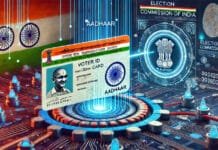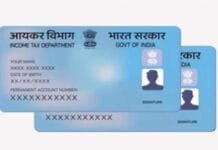In a historic leap forward, the Government of India has officially announced the nation’s first digital census, revolutionizing how demographic data will be collected. Citizens will now have the unprecedented option to submit their census information online through a dedicated web portal and mobile app, making the process faster, secure, and more accessible than ever before.
A New Era Begins: Citizens Can Now Self-Fill Census Data
For the first time in Indian history, individuals will be allowed to self-enumerate their details. Instead of waiting for government officials to visit their homes, citizens can log in via the official digital census portal or app and input their personal, household, and demographic details directly.
This monumental shift will take place in two major phases:
House Listing and Housing Census – Begins April 1, 2026
Population Enumeration – Begins February 1, 2027
Each phase will empower the public to enter their own data, significantly increasing participation, transparency, and data integrity.
Key Milestones of the Upcoming Digital Census
Digital Participation Enabled: Citizens can log in and fill forms themselves
Launch of Web Portal & App: A government-designed secure platform will be made available
Two-Phase Execution:
Phase 1: Counting homes and housing conditions (April 1, 2026)
Phase 2: Counting people, castes, and other demographics (February 1, 2027)
34 Lakh Employees Mobilized: Nationwide mobilization and training to support this transition
Final Deadline for Administrative Boundary Changes: December 31, 2025
Digital-First Approach: Eliminating Traditional Bottlenecks
Traditionally, India’s census has relied on paper-based data collection, with lakhs of government employees going door-to-door to collect information manually. This system, though historically significant, has often been plagued by issues such as data delays, inaccuracy, and high operational costs.
Now, with the introduction of digital self-entry, these challenges will be addressed directly:
Real-time upload to central government servers
Minimized human error
Secure, encrypted transmission of data
Faster analytics and national insights
Unparalleled Workforce Training for Seamless Rollout
The government has taken strategic steps to ensure the success of this massive undertaking. A total of 34 lakh personnel will be trained using a three-tier training hierarchy:
National Trainers
Master Trainers
Field-Level Enumerators
Each city and village will be broken down into micro-segments, with a dedicated enumerator assigned to each unit. This structure guarantees complete coverage and leaves no household or citizen unaccounted for.
Census Timeline and Structure: Full Breakdown
Phase 1: House Listing and Housing Census – From April 1, 2026
Objective: Collect detailed information about residences, infrastructure, sanitation, electricity, and ownership status
Mode: Self-entry online or via enumerator-assisted data collection
Digital Tool: Government portal and mobile app
Output: Accurate housing inventory for the entire country
Phase 2: Population Enumeration – From February 1, 2027
Objective: Collect data on population, gender, caste, literacy, language, employment, and migration
Citizens can fill out their own data using login credentials provided by authorities
Enumerators will assist those without internet access or digital skills
Output: A comprehensive demographic map of India’s 1.4+ billion citizens
Government Notification Issued on June 16, 2024
On June 16, 2024, the Ministry of Home Affairs officially issued the notification kickstarting preparations for India’s 16th national census and the 8th since independence. This notification outlines:
Project timelines
Digital infrastructure rollout
Training guidelines
Technological integration standards
Cybersecurity and data protection protocols
Redefining Data Integrity Through Technology
With digital integration, data collection will no longer depend solely on field officers. Citizens can:
Log into the portal with secure OTP-based verification
Submit documents and proof of identity if required
Review and edit entries before submission
Receive confirmation once data is accepted into the national census repository
This not only enhances individual empowerment but also streamlines verification and accelerates compilation.
Administrative Reorganization Cut-Off: December 31, 2025
To ensure accuracy in geographic and demographic categorization, the central government has directed all states and union territories to finalize district, tehsil, and police station boundaries by December 31, 2025. These boundaries will be considered final for census purposes, and enumeration will commence only three months after this date, i.e., from April 2026 onwards.
This measure eliminates any ambiguity regarding local jurisdictions and ensures clear mapping of census data.
Cybersecurity and Privacy at the Core
The digital census infrastructure will feature state-of-the-art encryption, multi-layer authentication, and cloud-based backups to ensure that every citizen’s data remains safe, private, and tamper-proof. The platform will also be GDPR-aligned and built to handle the world’s largest civilian data collection effort.
Benefits of the New Digital Census Approach
Faster Processing: Instant data sync with central servers
Cost-Efficiency: Reduced paper use and manual labor
User Empowerment: Citizens can participate actively
Better Planning: Real-time data helps shape future policies
Environmental Impact: Reduction in paper waste and logistical overhead
India Joins the Global League of Digital Census Nations
With this bold move, India joins countries like the United States, Australia, and Canada, where digital census methods are now the norm. This positions India as a technologically progressive nation prepared to harness big data for smarter governance.
What Should Citizens Do Now?
Stay informed via official channels from the Office of the Registrar General & Census Commissioner
Get ready with relevant documents like Aadhaar, PAN, utility bills
Keep an eye out for the launch of the official portal and mobile app
Encourage digital participation within communities for faster, error-free enumeration
Conclusion: A Defining Moment for Indian Governance
The 2026–2027 Digital Census isn’t just about numbers. It’s about transparency, inclusivity, and technological empowerment. It marks a transformative leap in how India sees, serves, and secures its population’s future. With millions trained, a digital-first interface, and citizen-led entry, this is not just a policy change — it is a national milestone.
















